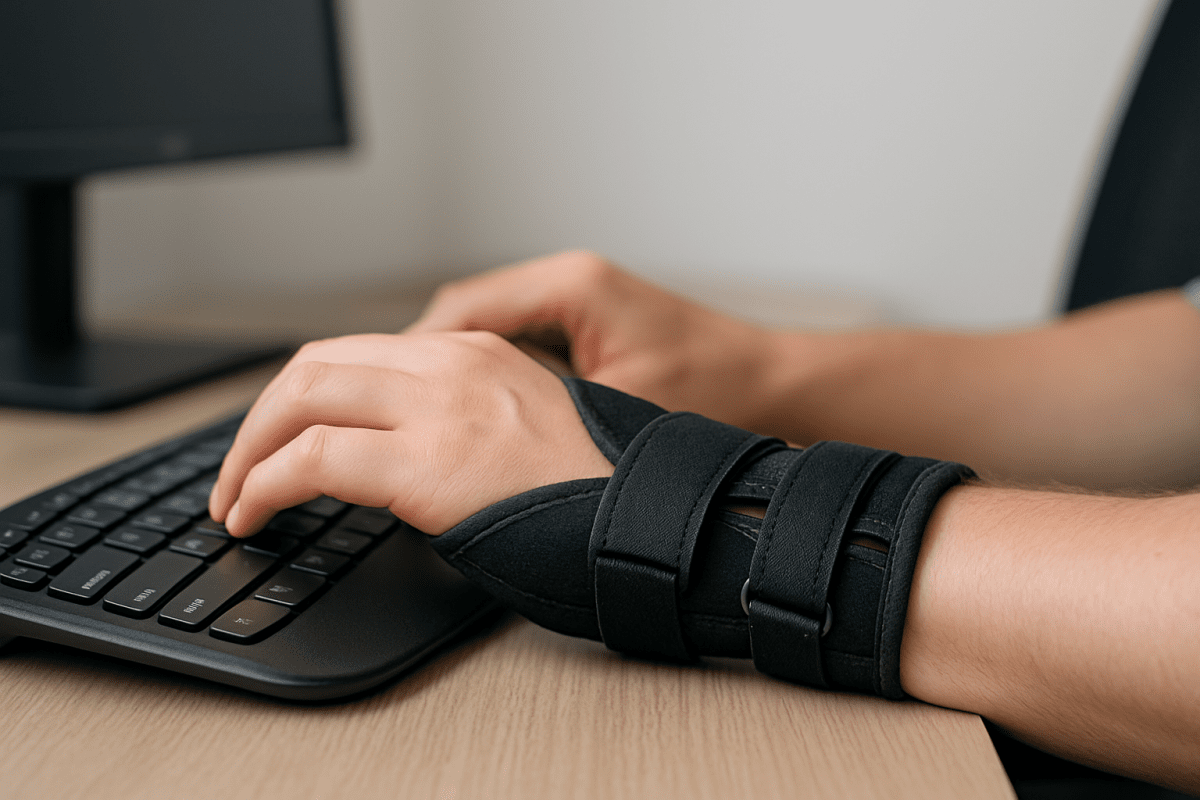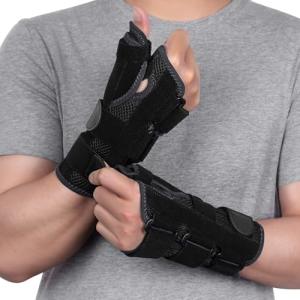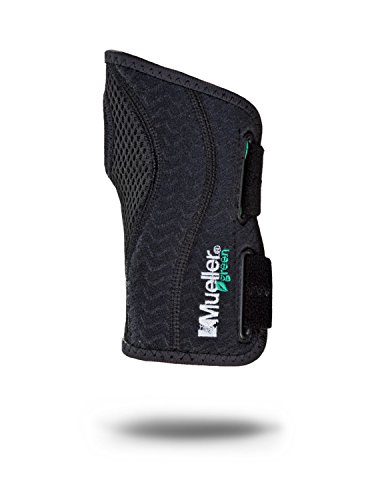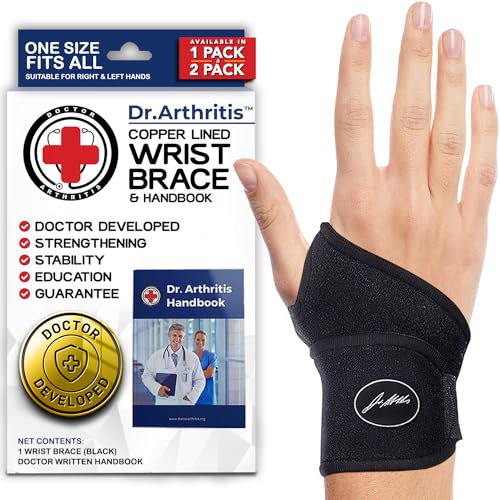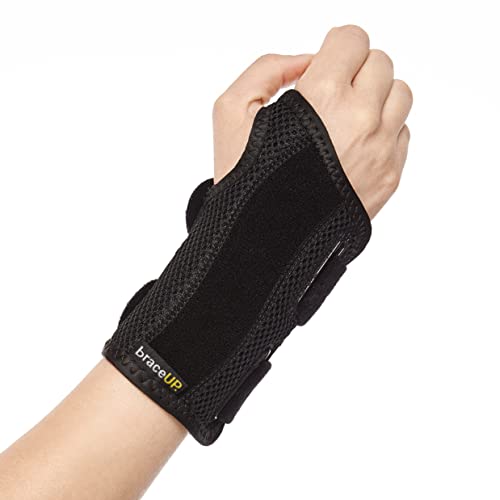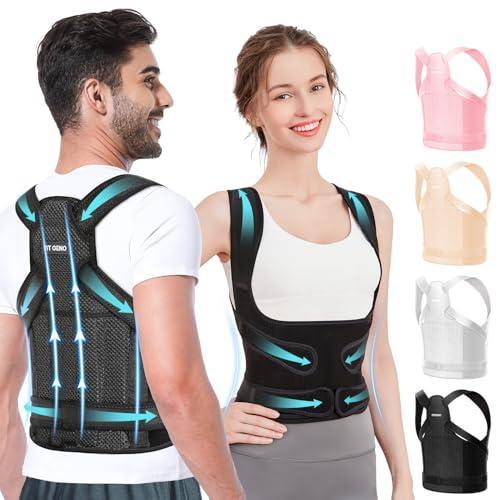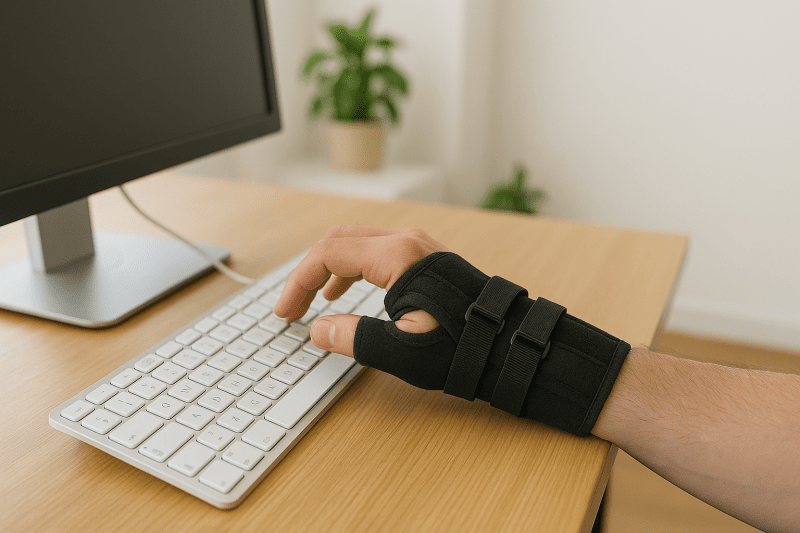If you have been feeling tingling, numbness, or pain in your hand or wrist, you are not alone. Carpal tunnel syndrome affects millions of people who spend long hours typing, scrolling, lifting, or performing repetitive hand movements. One of the most effective early treatments is wearing a wrist brace, but how do you know when it is time to start using one?
Below are seven clear signs that you might need a wrist brace for carpal tunnel symptoms, how bracing helps, and when to consider seeing a medical professional.
My Personal Experience With Carpal Tunnel
Before we begin, here is why I take this topic seriously.
A while back, I started experiencing tingling and numbness in my hand and fingers from repetitive computer work. At first I ignored it and assumed it would go away with rest. Instead, it slowly got worse. The tingling became more noticeable, and the numbness would wake me up at night.
What finally helped was wearing a wrist brace at night and while working on the computer. I paired that with an ergonomic mouse and keyboard as well as physical therapy prescribed by my doctor. The combination of support and better wrist positioning allowed my carpal tunnel to heal before it progressed into something more serious.
This is why recognizing the early signs and choosing the best wrist brace for carpal tunnel can make such a big difference.
1. Tingling or Numbness in Your Fingers
Tingling or numbness in the thumb, index finger, middle finger, or half of the ring finger is the most common early sign of carpal tunnel syndrome. These fingers are controlled by the median nerve, which travels through the narrow carpal tunnel in your wrist.
A carpal tunnel brace helps keep your wrist in a neutral position, which reduces pressure on that nerve. If tingling or numbness is happening often, especially during or after repetitive activities, it may be time to consider using a brace.
2. Pain or Burning Sensations in the Wrist or Hand
Carpal tunnel discomfort varies from person to person. Some people feel burning, others experience sharp electric pain, and some feel a dull ache that never fully goes away.
If your pain increases when typing, scrolling, gripping objects, or holding a phone, your wrist is likely bending in ways that strain the median nerve. A brace limits this strain and helps calm inflammation.
3. Symptoms That Get Worse at Night or in the Morning
Many people with carpal tunnel find that symptoms flare up at night. This happens because many people bend or curl their wrists in their sleep without realizing it. I certainly didn't.
If you wake up with numb hands, pins and needles, or wrist stiffness, a night brace can help. Wearing a brace keeps your wrist straight while you sleep, preventing the nerve from being compressed.
4. Weak Grip or Trouble Holding Objects
Carpal tunnel can weaken the muscles at the base of the thumb. This can cause:
- A weaker grip
- Difficulty holding a phone
- Trouble lifting small items
- Problems opening jars
- Objects slipping out of your hand
A wrist brace can help by reducing nerve irritation and giving the muscles a chance to recover.
5. Symptoms Triggered by Repetitive Movement
Typing, gaming, texting, crafting, weightlifting, and tool use are all activities that can aggravate carpal tunnel syndrome. If your symptoms get worse during or immediately after these activities, your wrist may need extra support.
The best wrist brace for carpal tunnel will limit poor wrist positioning and reduce stress while still allowing the hand to function normally.
6. Swelling or Tightness Around the Wrist
Some people develop:
- Puffiness around the wrist
- Pressure or a tight feeling
- Difficulty bending the wrist
- A sensation of fullness inside the wrist
Although swelling does not always mean carpal tunnel, swelling combined with tingling or numbness is a strong signal that the median nerve may be irritated. A brace keeps the wrist stable and may help reduce stress that contributes to swelling.
7. Symptoms That Return After Rest
If you take breaks but your symptoms keep coming back, your wrist may not be staying in a neutral position during activity or sleep. Rest alone is not always enough.
A carpal tunnel brace helps by providing continuous support. It prevents harmful wrist angles that put pressure on the nerve and allows irritated tissue time to recover properly.
How Wrist Braces Help Carpal Tunnel
A wrist brace supports healing by:
- Keeping the wrist straight rather than bent
- Reducing compression on the median nerve
- Limiting sideways or downward motion
- Helping reduce inflammation
- Preventing sleep related wrist curling
Many doctors recommend night bracing as one of the first steps in treating early stage carpal tunnel syndrome.
Tips for Getting the Best Results from Your Brace
To get the most benefit:
- Wear it at night. This prevents the wrist from curling while you sleep.
- Use it during repetitive activities. Typing and phone use are the biggest triggers.
- Pair it with better ergonomics. A vertical mouse and ergonomic keyboard can improve wrist alignment.
- Take short breaks. Give your hands 30 to 60 seconds of rest every 20 to 30 minutes.
- Choose the correct size and fit. A brace that is too tight can make symptoms worse.
$14.99
4.66 out of 5 stars The Thumb Spica Splint for the right hand gives you solid support where you need it most, helping to stabilize your thumb and wrist. It’s comfortable, easy to wear, and perfect for anyone dealing with injuries or just needing a little extra help during recovery.Thumb Spica Splint for Right Hand & Wrist Support
Get the support you need for your thumb and wrist to ease pain and improve mobility
Product information
Product Review Score
Description
Product links
When to See a Doctor
Although wrist braces help many people, talk to a doctor if you experience:
- Constant or severe numbness
- Noticeable loss of hand strength
- Shrinking of thumb muscles
- No improvement after several weeks of bracing
A professional can confirm the diagnosis and recommend additional treatment if needed.
Final Thoughts
Carpal tunnel syndrome often starts with subtle signs that are easy to overlook. Tingling, numbness, wrist pain, and nighttime symptoms are all strong indicators that your wrist may need extra support. Using a carpal tunnel brace is a simple and effective way to reduce pressure on the median nerve and help prevent long term damage.
My own experience with carpal tunnel symptoms showed me how important early action can be. Wearing a brace at night and while working, along with switching to ergonomic equipment, made a noticeable difference in my recovery.
If any of these signs sound familiar, consider finding the best wrist brace for carpal tunnel for your needs and give your hands the support they deserve.
Looking for more information on carpal tunnel syndrome? Check out our article "What Is Carpal Tunnel Syndrome and How Can Wrist Braces Help?".
